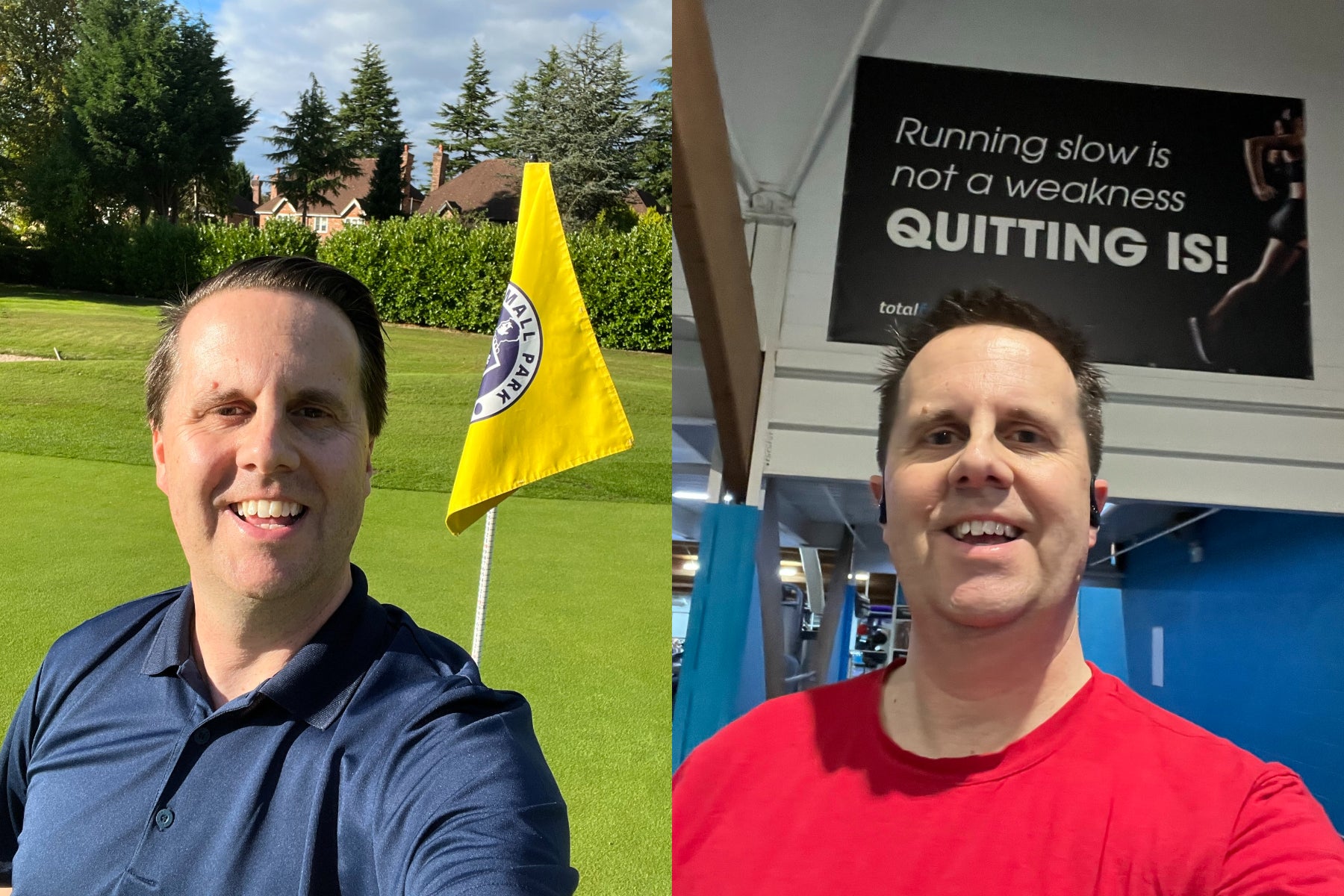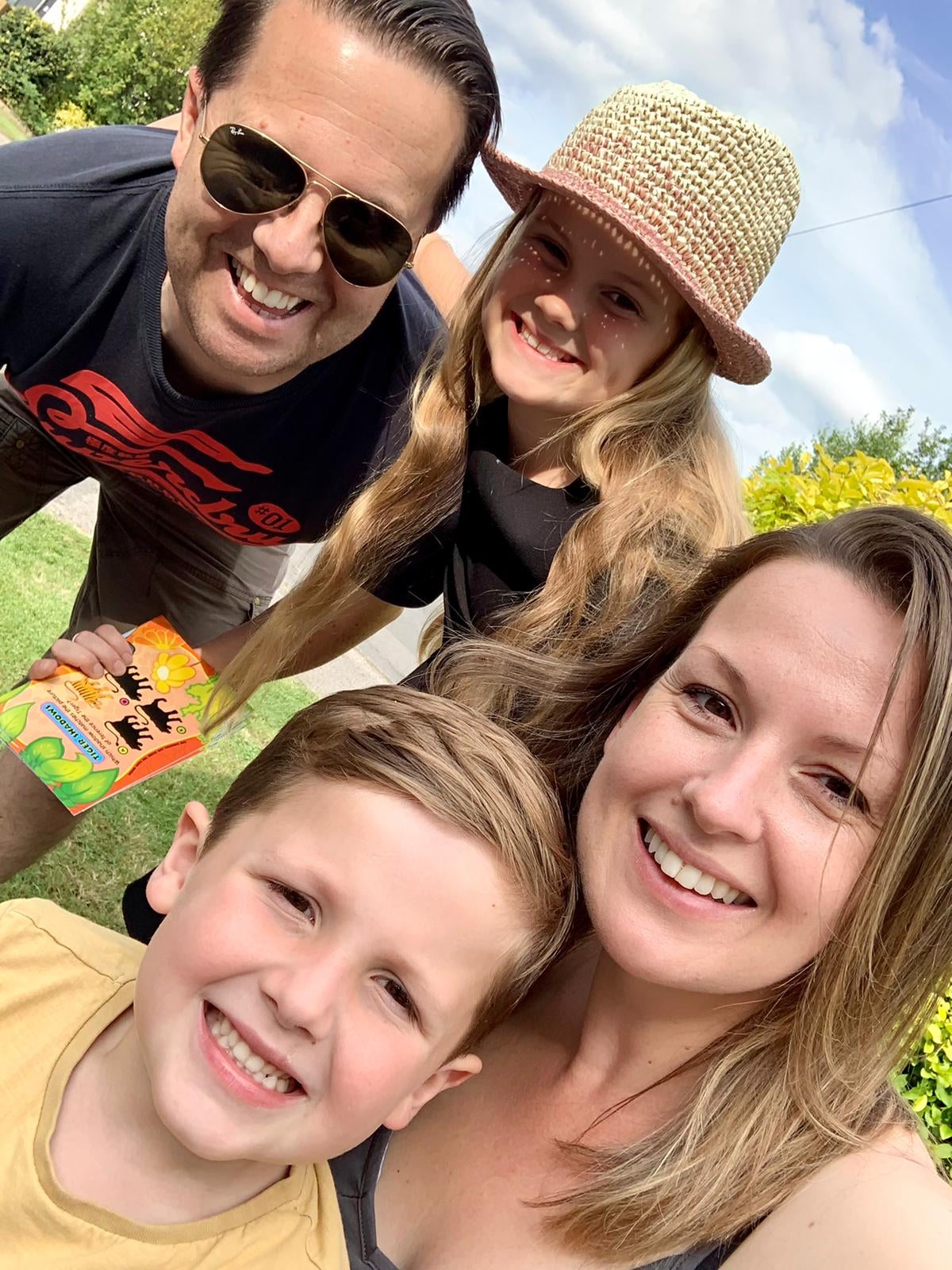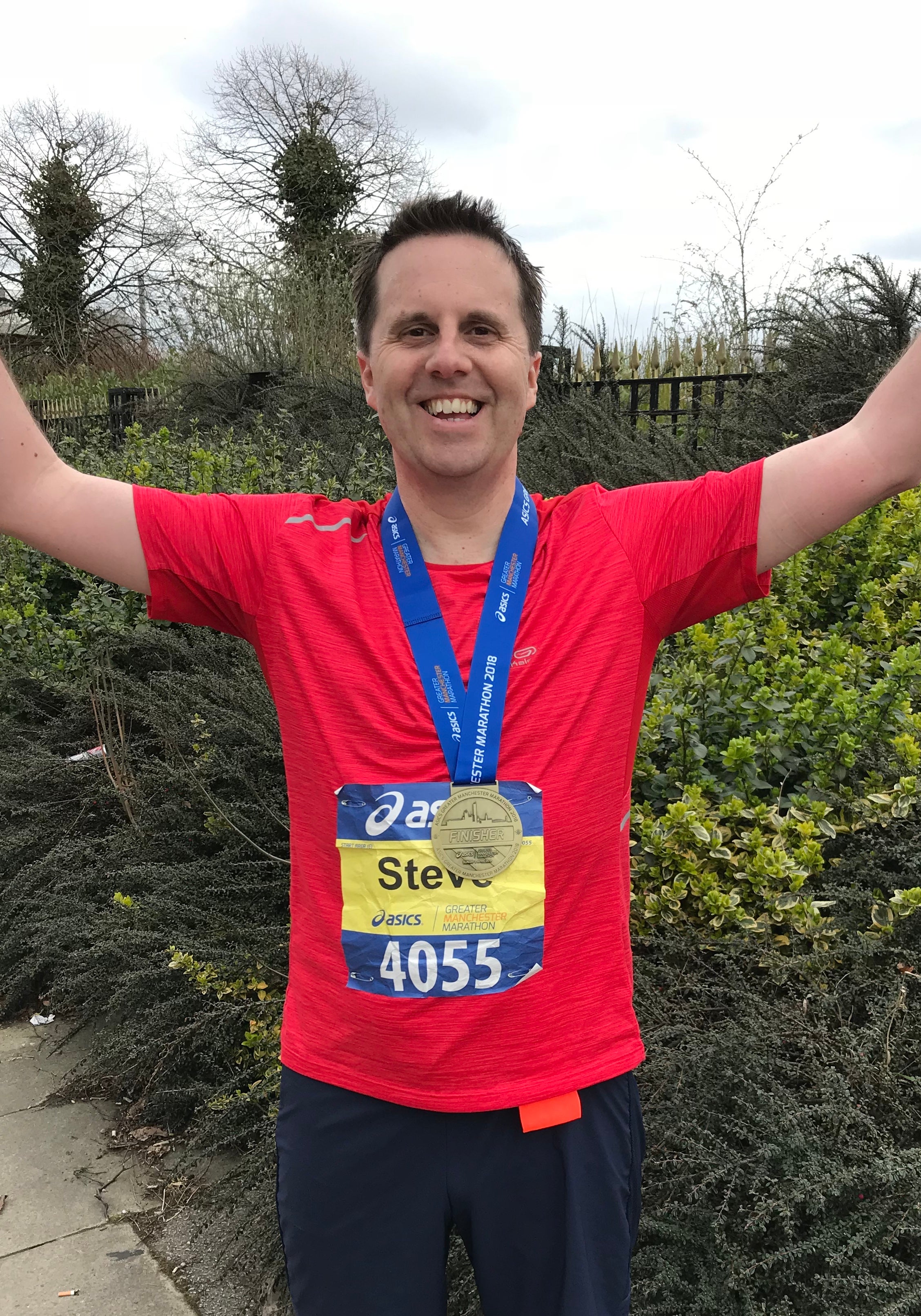Marathon runner warns others of one in 10 million condition that started with a headache
Steve Rickets was diagnosed with superficial siderosis diagnosis – a disabling degenerative disorder affecting the brain and spinal cord

Your support helps us to tell the story
From reproductive rights to climate change to Big Tech, The Independent is on the ground when the story is developing. Whether it's investigating the financials of Elon Musk's pro-Trump PAC or producing our latest documentary, 'The A Word', which shines a light on the American women fighting for reproductive rights, we know how important it is to parse out the facts from the messaging.
At such a critical moment in US history, we need reporters on the ground. Your donation allows us to keep sending journalists to speak to both sides of the story.
The Independent is trusted by Americans across the entire political spectrum. And unlike many other quality news outlets, we choose not to lock Americans out of our reporting and analysis with paywalls. We believe quality journalism should be available to everyone, paid for by those who can afford it.
Your support makes all the difference.A father-of-two collapsed with a headache that felt like “someone had taken a baseball bat” to his head, before being diagnosed with a “one in 10 million” neurological condition which has left him with daily pain and short-term memory loss.
Steve Ricketts, a 46-year-old regional commercial manager from Bramhall, Greater Manchester, had dreamed of taking part in the Adidas Manchester Marathon for a second time after completing the event in four hours and 31 minutes in 2018.
However, in a “horrific” chain of events that began in December 2021, Steve collapsed at a work function after experiencing a “thunderclap headache”, which he later discovered was a bleed on the brain – a subarachnoid haemorrhage.
“The headache was that unbearable that I thought, if I close my eyes I won’t wake up,” Steve said.
This led to Steve’s superficial siderosis diagnosis – a disabling degenerative disorder affecting the brain and spinal cord –
in May 2022, which, according to The Silent Bleed charity, affects approximately one in 10 million people.
The condition left Steve “crippled” with pain and unable to walk initially, meaning he had to learn how to regain his mobility with the help of healthcare professionals, his wife Lauren, 39, and his children Elle, 10, and Sammy, eight.

Steve made a significant recovery but now, as a result of the diagnosis, experiences daily headaches, short-term memory loss, double vision, ataxia, which affects his balance, and tinnitus – the sound of ringing in the ears.
While he is taking medication to slow the progression of the condition, there is currently no cure – and this inspired him to run the Adidas Manchester Marathon in April to raise funds for The Silent Bleed charity to help find a cure.
“I want to use the marathon to raise awareness for the condition because, in all honesty, the symptoms could be mistaken for dementia, MS, Alzheimer’s, Parkinson’s,” Steve said.
“Most people who’ve been diagnosed have experienced some sort of misdiagnosis beforehand or been dismissed.
“Running the marathon is mainly about raising the awareness, but it’s also about proving something to myself and the wider superficial siderosis community.”
Steve ran his first marathon in 2018 and was planning to take part again in 2019, but a series of “niggly injuries” led him to defer to 2020.
The Covid-19 pandemic, along with Steve having two cycling accidents, meant he had to defer again, but after suffering a shoulder injury while “playing tag with the kids”, he could not enter the event in 2021.
That December, Steve attended a work function and felt “absolutely fine” – but at around 5pm, he said he experienced a “thunderclap headache”, which felt like “someone had taken a baseball bat” to the back of his head, before collapsing.

Luckily, thanks to completing a St John Ambulance first aid course, Steve was able to recognise that he required urgent attention, but he believed he was experiencing a brain aneurysm – a bulge in a blood vessel.
“I had a pressure feeling in my head, which extended into my shoulders and my arms and my extremities, I wasn’t able to speak, and I had tremors, seizure-like tremors,” he explained.
“I’ve never had a headache like it, and I thought I was a goner.”
Steve was then blue-lighted to A&E at North Manchester General Hospital where it was discovered he had a bleed on his brain – a subarachnoid haemorrhage.
At around 1am the following morning, Steve was woken up by two paramedics who said he needed to be transferred to Salford Royal Hospital for specialist care because they told him: “There’s a chance you won’t make it.”
Upon arrival at the hospital, Steve underwent many tests to search for the source of the bleed, but he was too scared to fall asleep because he feared he “wouldn’t wake up”.
Steve then spent around 10 days in hospital on “round-the-clock painkillers” before being discharged but during this time he dropped almost two stone in weight as he “couldn’t stomach food”, and he lost most of his mobility.
He was then signed off work for three months and he underwent physio and rehabilitation to help him recover and walk again.
“It started out as little tiny goals – the kids walking me to the end of our road and back after school – and then walking a little bit further to the church across the road and back,” Steve explained.
“There was a bench about half a mile away, and my aim was to walk to the bench, sit, rest, and then walk back, partly because I’ve always been quite a sporty person but also because I couldn’t manage anything else mentally.
“I couldn’t stand bright lights, I couldn’t stand noises, motion triggered me quite badly, I couldn’t go in busy places for very long, and I couldn’t watch the telly.”
Steve said he knew the physical recovery would be difficult, but learning to accept he could no longer do things, such as reading before bed due to his inability to retain information, was the most challenging aspect.
He then started experiencing double vision and memory gaps, along with unbearable headaches that felt like he was “waking up with a 20-pint hangover” – but he was assured these symptoms “should settle down”.

This was not the case, however, and with Steve feeling his headaches were a sign of something more severe, he scheduled an appointment at the Alexandra Hospital in Cheadle, Greater Manchester, with a different neurologist in May 2022 to seek a second opinion.
Within 10 minutes of the consultation, Professor Mark Roberts said: “I think you might have something called superficial siderosis” – and one week later, the results of Steve’s MRI scan confirmed his suspicions.
“He said it’s very rare, there’s no cure for it, but there is a drug that can lessen the symptoms and slow down the progression,” Steve explained.
Steve now suffers with daily headaches, double vision, “horrific” balance, memory loss, and tinnitus – but his diagnosis prompted him to start playing golf again and book a long-awaited family holiday to Disney World Florida in 2023.
Although the condition is degenerative, Steve is taking medication and said “the future is a long way off” and he does not want “life to get in the way” of his future goals – one of which is completing another marathon.
He is now training up to four times a week and aiming to complete the event in under five hours, and he wants to show others with superficial siderosis that they are not alone and they can continue to overcome challenges.
“I was just sitting at home, in a world of pain, and thought I need to do something,” Steve said.
“I actually look on the fact that I had a haemorrhage as a good thing because, if I hadn’t found out, 10 years down the line I could be in a horrific state, trying to get some answers and not knowing what it is.
“I’m relatively comfortable in myself in that I’m doing everything I possibly can at the moment to prolong my quality of life for as long as I can.
“I understand it’s a bit of a ticking clock, but getting to the point of accepting those physical limitations has meant acknowledging the rest has become easier.”
To donate or to find out more, visit Steve’s fundraiser here: justgiving.com/crowdfunding/stephen-ricketts-superficial-siderosis
Join our commenting forum
Join thought-provoking conversations, follow other Independent readers and see their replies
Comments